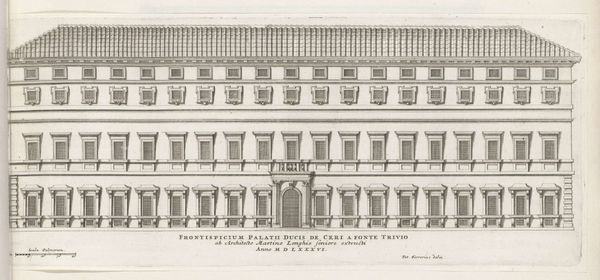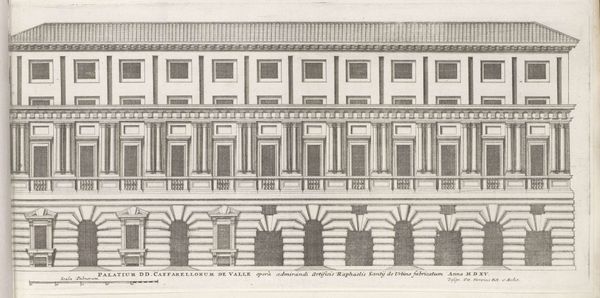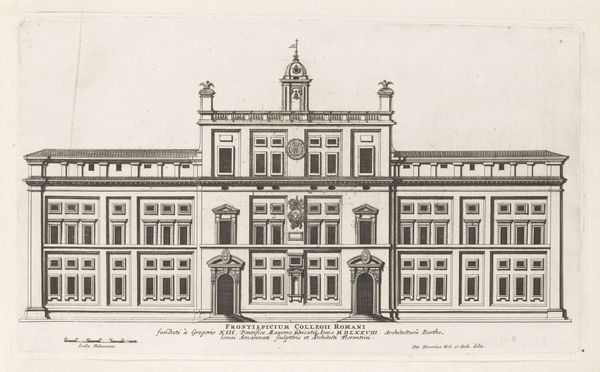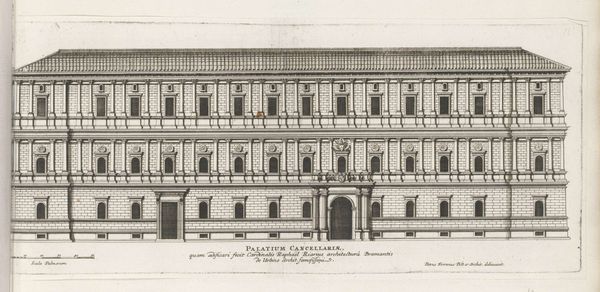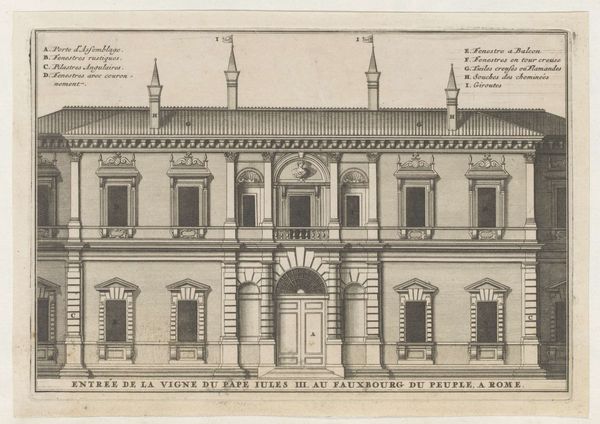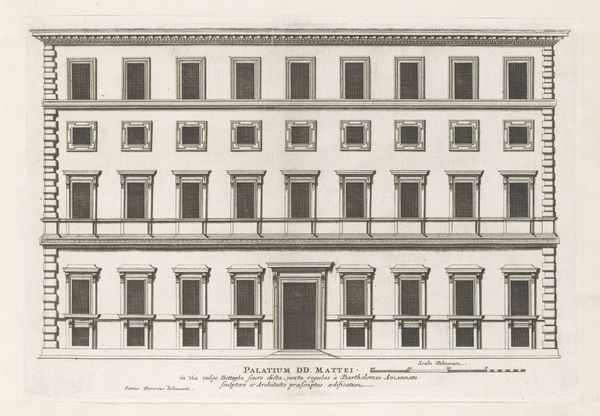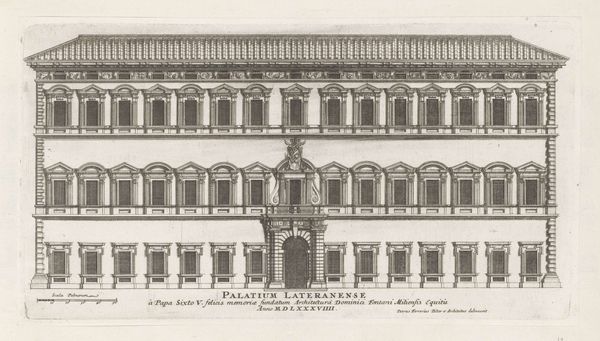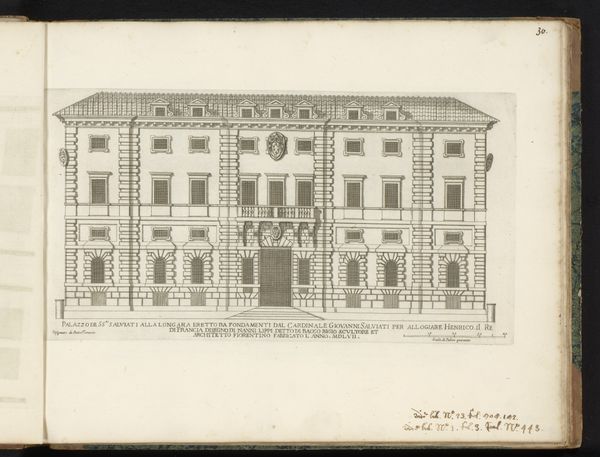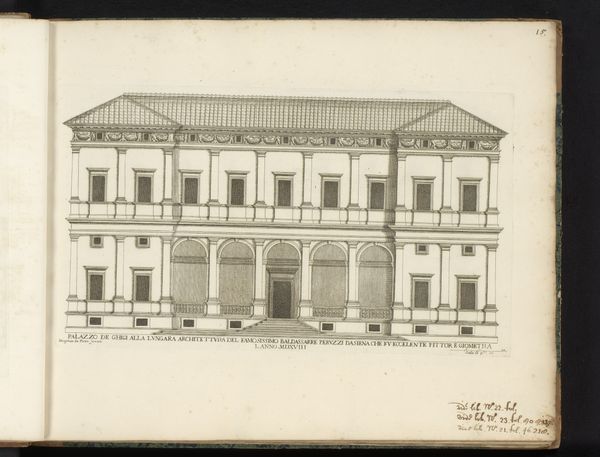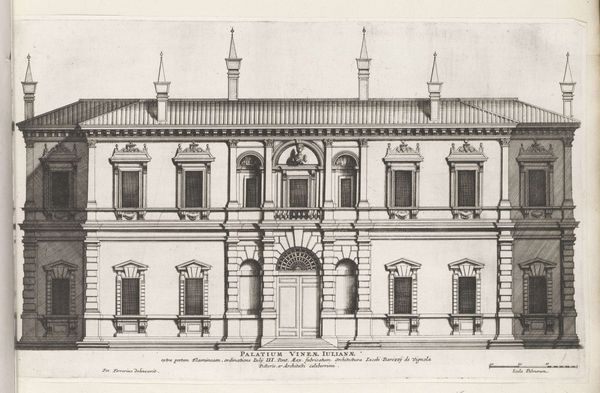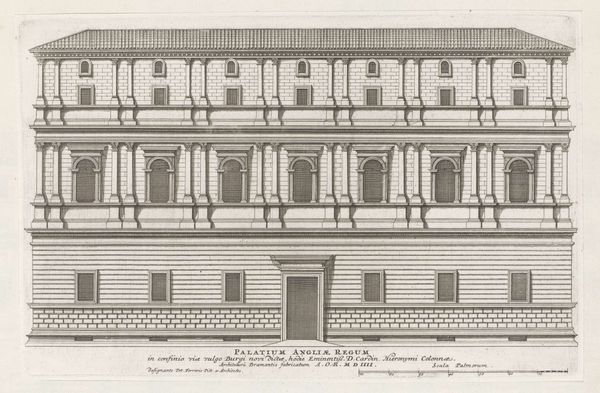
#
aged paper
#
homemade paper
#
parchment
#
old engraving style
#
hardpaper
#
old-timey
#
stylized text
#
golden font
#
historical font
#
columned text
#
building
Dimensions: height 187 mm, width 402 mm
Copyright: Rijks Museum: Open Domain
Curator: This engraving, "Façade van Palazzo Corsini te Rome," by Giovanni Battista Falda, completed in 1655, offers a meticulous elevation of the Palazzo Corsini. It’s currently held at the Rijksmuseum. Editor: My first thought? Impressively detailed, but almost...sterile. It's technically brilliant, showing the building's design, but where's the life? All I see are neat rows of windows. The paper itself looks old and textured. I wonder about its quality? Curator: The perceived sterility speaks volumes, I think, about the shift towards architectural precision and representation in the 17th century. Engravings like this served a vital public role, disseminating architectural ideas and projecting an image of power linked to patronage. It's not just about the Corsini family; it's about showcasing Rome as a center of artistic innovation. Editor: True, but I'm also drawn to the process. This isn’t some quick sketch; it’s a carefully etched plate. Consider the labor involved: the artist, the engraver, the paper makers, all working to create a visual statement about power and refinement. The lines are so clean; what tools did they use to get such precision? How were these prints distributed? Were they for the elite only, or did tradespeople also use them? Curator: Initially, these engravings circulated among a restricted elite—architects, patrons, and collectors forming a cosmopolitan network exchanging designs and vying for status. But later, with broader print distribution, the architectural vision reached wider audiences. Editor: Did Falda make his own paper, or did he use ready-made paper? How did the paper’s quality or source affect the engraving’s final impact and longevity? Curator: Such questions open fascinating avenues for exploring the cultural context, shifting focus from mere aesthetics to socio-political engagement. The work showcases not only the structure of the palace but also its intended symbolic role in cementing the Corsini family’s influence. Editor: Precisely, we're looking at more than just an image. We're looking at the residue of collaborative production, material decisions, and power dynamics etched onto paper. The work of so many hands brought into being by patronage. Curator: That offers a whole new lens through which to understand its historical importance. Editor: Indeed. Looking at it that way really deepens the impact, doesn't it?
Comments
No comments
Be the first to comment and join the conversation on the ultimate creative platform.
